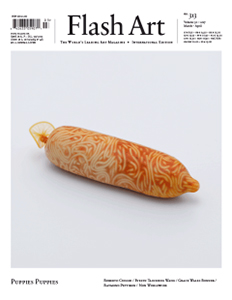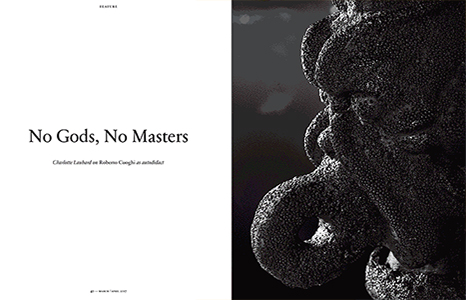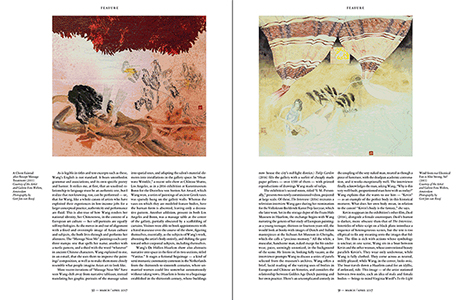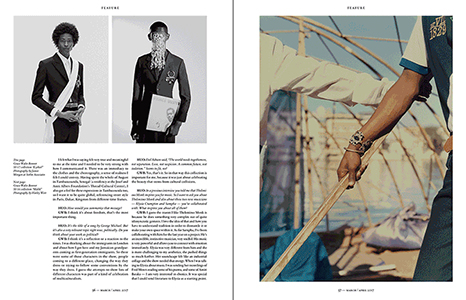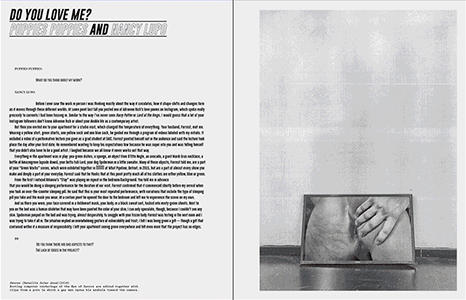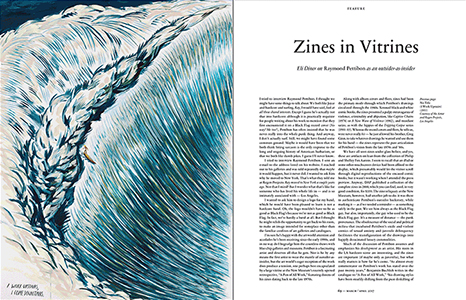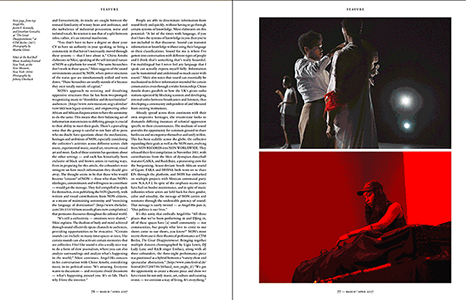This issue spotlights the representation of disenfranchised and marginalized communities and gives voice to creatives emerging out of these groups. Featuring: ãself-taughtã Italian artist
Roberto Cuoghi; a survey of the works of Chinese artist Evelyn Taocheng Wang; an interview with Grace Wales Bonner by
Hans Ulrich Obrist; art-world outsider turned insider
Raymond Pettibon; the sound environments of musical collective Non Worldwide; a conversation with Puppies Puppies and Nancy LupoãÎ
Discussing the painting practice of Kerry James Marshall with Hans Ulrich Obrist, fashion designer Grace Wales Bonner cites Marshall's intention to keep producing images of blackness ãso that you're broadening the spectrum and flooding people with that kind of imagery until it becomes normal.ã ãI think that's probably why I'm on this path as well,ã she concludes. Her words are central to this issue of
Flash Art, which is premised on broadening the spectrum of representation of disenfranchised and marginalized communities and giving voice to creatives emerging out of these groups.
This issue gathers together artists and practitioners concerned with the development of creative languages ãfor empowerment,ã all of whom ãweaponizeã creativity. In a tacit homage to
Lutz Bacher's interview project ãDo You Love Me?ã our cover artist Puppies Puppies meets with fellow Los Angelesãbased artist Nancy Lupo. To his question, ãWhat do you think about power in my work?ã Lupo replies: ãWe are mutually vulnerable. The project of finding out when and where love begins is irresistible because it allows you to inscribe yourself into something that's already happening. You get to choose your archetype, although it's true that archetypes can be vexing, as are readymades.ã
Flash Art is a contemporary art and culture magazine founded in 1967. Within a decade, it became an indispensable point of reference for artists, critics, collectors, galleries, and institutions. In 2020, Flash Art became a quarterly publication, at the same time increasing its trim size and updating its graphic identity. The magazine offers a fresh perspective on the visual arts, covering a range of transdisciplinary approaches and fostering in-depth analyses of artist practices and new cultural directions. Today, Flash Art remains required reading for all who navigate the international art scene.
Flash Art is known for it covers featuring artists who subsequently become leading figures in the art world. The magazine includes photoshoots, productions, critical essays, monographic profiles, conversations with emerging and established artists, and a range of ongoing and thematic columns that change every few years. The long history of the magazine is also highlighted by pivotal texts from the archive that are included in the publication time to time. Finally, every issue offers a highly curated selection of the best institutional exhibitions on the global scene.

